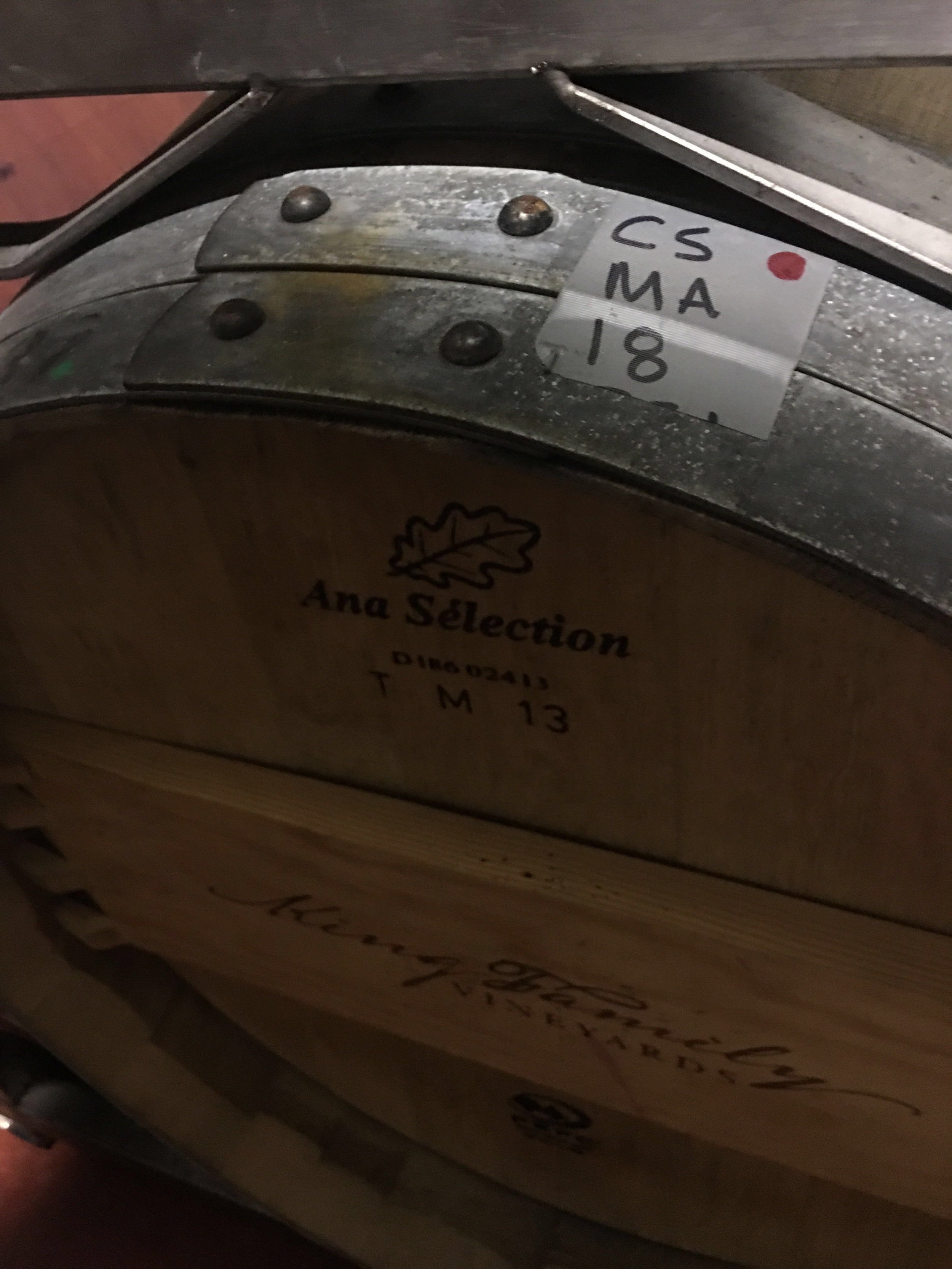It is with relief and great pleasure that the vines begin véraison, when we see our Cabernet Sauvignon and Petit Verdot clusters turn from green to red and begin to ripen, developing sugars and flavors. All the frantic work of controlling vine growth by tying vines to the trellis and hedging rows slows down and almost stalls. This seems to happen at the perfect moment—just as the hot, late days of summer begin, and right as our endurance and patience begins to unravel. We get to take a breath, as the fruits of our labor literally ripen on the vine.
It has been a wonderful experience to develop an appreciation of this process. In the first few years of tending the vineyard, we would stress at each phase of vine development. In the Spring, we would watch the delicate buds swelling and hope for frostless mornings. During early Summer, we would frantically tame the canopy with the sinking feeling that this vine growth would never come to an end. Late in the season, we would watch the weather for rain and constantly check the pH and Brix levels of the grapes, while we impatiently waited for perfect flavor and ripeness. It slowly started sinking in that what we were hoping for and stressing about was balance in the vineyard.
After five years of growing grapes, we are finally beginning to get a feel for the timing and the breadth of this process—what musicians might refer to as, “the silence between the notes.” To be sure, we still sweat the small things, but with more appreciation of the whole cycle. We take time now to breathe, stopping to enjoy the shaded spots and taking satisfaction in the moment. We take time to observe the natural balance of each vine and of ourselves in the midst of this process. On occasion, these moments can yield insight.
In Virginia, we are cursed with the Japanese Beetle, a pest that devours the leaves of the vines, inhibiting their ability to ripen fruit. We are dedicated to a biodiverse farm, with a majority of forested land, no herbicide use, and cultivation of various cover crops. But the resident population of Japanese Beetles have always made us feel as if we were “under siege”. In our first two seasons beetles claimed about 50% of the foliage, sorely compromising plant development and likely contributing to some winter survival issues. As a result, we did not harvest a crop until the vines reached their fourth year.
In our frantic third year of farming, we reluctantly applied some inorganic insecticide on a small planting of first year vines, hoping to help them get established. We reasoned that since we were not taking any fruit from these vines that year, the benefits to plant growth seemed justifiable. At the same time, our holistic mindset kept reminding us that tough intervention may fix a problem in the short term, but the system may never self-correct, becoming dependent upon the chemical. We waited and watched. We wondered about our tiny vineyard within the much larger ecosystem of the surrounding Albemarle and Nelson County areas. Was this chemical intervention worth it?
Then last year (2018) something interesting occurred: we noticed that on our mature vines, the beetles limited their feeding to a zone about five feet off the ground, near the highest trellis wire. Even better, we noticed that they hardly touched the block of vines we had just planted who were all below three feet tall and presumably (hopefully) out of the beetles’ preferred zone. We concluded that there was no need for insecticide of any sort, organic or non. The canopy of the mature vines looked ragged, but we were going to hedge some of that anyway. We worried about leaf damage impacting sugar development in the grapes, but the vines ripened a beautiful crop last year. We felt the tradeoff was well worth it.
As we have further settled into our role as grape farmers, we noticed yet another boon to our Japanese Beetle issues during this year’s growing season: several chewed up piles of beetles on the ground. Something is eating the beetles! We don’t know what it is yet, but we can definitely say beetle damage is less than half of that from previous years. There is something new in our ecosystem preying on substantial amounts of beetles. Maybe it’s the crows, finally paying us back for decimating every last berry of the small crop of 2016? We learned then that netting needs to be fastened not draped.
It is too soon to declare “equilibrium!!”, as there are usually two waves of beetles per year. Who knows what years to come will show, but for now it appears the vineyard ecosystem is self-correcting. Or perhaps in the very least, we can take another breath between tasks, and appreciate and enjoy the humbling and ongoing process of growing wine in Virginia.




















